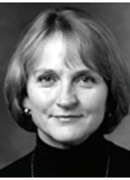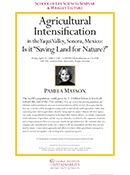Agricultural Intensification in the Yaqui Valley, Sonora, Mexico: Is it Saving Land for Nature?
Pamela A. Matson
- Richard and Rhoda Goldman Professor of Environmental Studies, Department of Geological and Environmental Sciences
- Victoria P. and Roger W. Sant Director of the Earth Systems Degree Program
- Co-Director, Center for Environmental Science and Policy
The world's population could grow by 2-3 billion before it levels off toward the end of the 21st century. If we are to feed this growing population and eliminate undernourishment, increases in food production will be needed. Most agree that the best way to do this will be through increasing yields on land already under agriculture, rather than converting more land to agriculture, thereby "saving land for nature."
Matson will draw upon a case study of agricultural development in the Yaqui Valley, Sonora, Mexico, to evaluate components of intensification of agriculture and the ways in which they are linked to the expansion of land use and to biogeochemical effects in ecosystems outside the agricultural area. She concludes that, at a regional scale, intensification in this case is linked to off-site degradation and thus does not save land for nature. Conservation approaches and efforts to reduce offsite agricultural consequences must be carried out together, with an integrated, regional perspective.



